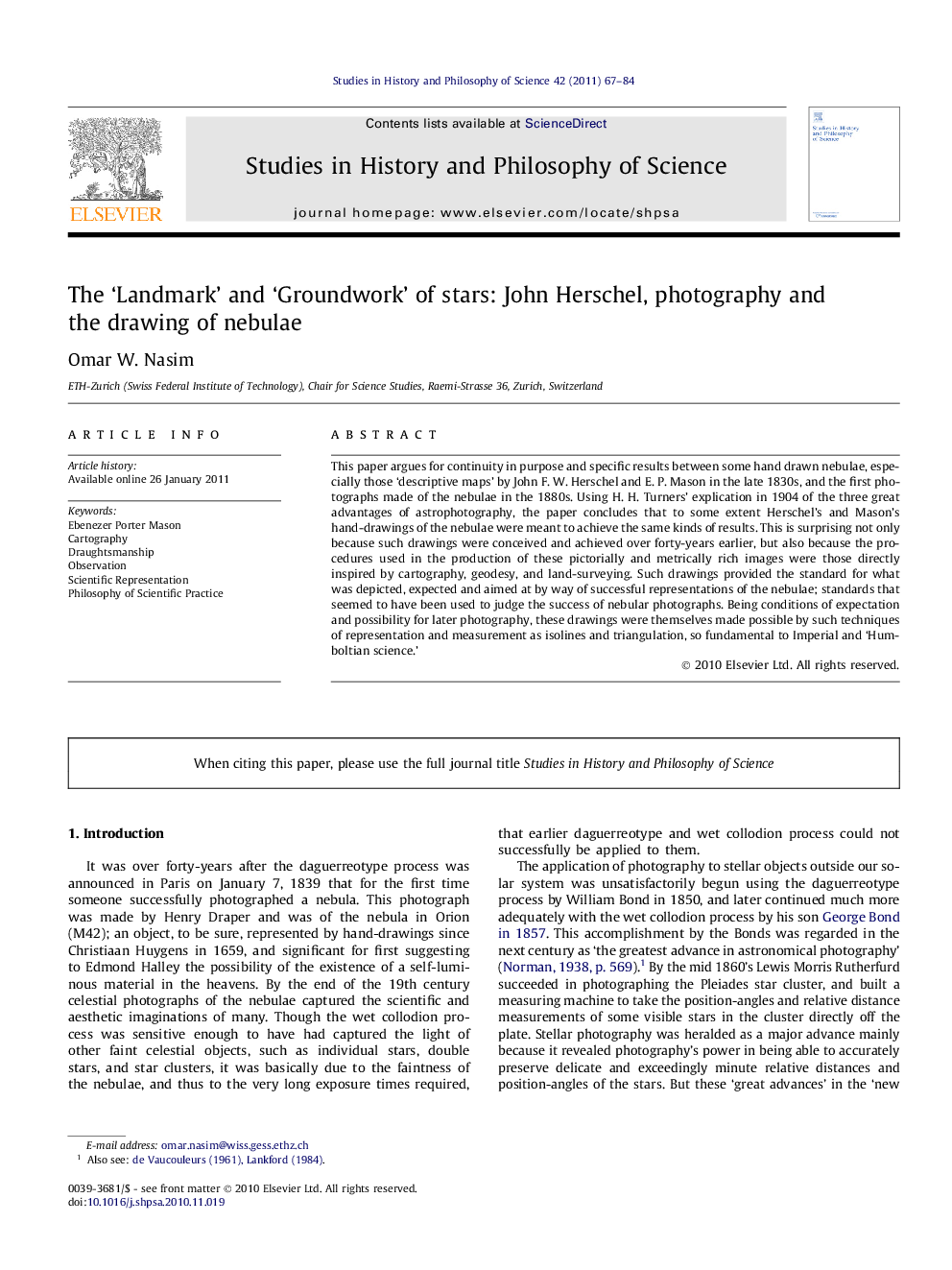| Article ID | Journal | Published Year | Pages | File Type |
|---|---|---|---|---|
| 1160559 | Studies in History and Philosophy of Science Part A | 2011 | 18 Pages |
This paper argues for continuity in purpose and specific results between some hand drawn nebulae, especially those ‘descriptive maps’ by John F. W. Herschel and E. P. Mason in the late 1830s, and the first photographs made of the nebulae in the 1880s. Using H. H. Turners’ explication in 1904 of the three great advantages of astrophotography, the paper concludes that to some extent Herschel’s and Mason’s hand-drawings of the nebulae were meant to achieve the same kinds of results. This is surprising not only because such drawings were conceived and achieved over forty-years earlier, but also because the procedures used in the production of these pictorially and metrically rich images were those directly inspired by cartography, geodesy, and land-surveying. Such drawings provided the standard for what was depicted, expected and aimed at by way of successful representations of the nebulae; standards that seemed to have been used to judge the success of nebular photographs. Being conditions of expectation and possibility for later photography, these drawings were themselves made possible by such techniques of representation and measurement as isolines and triangulation, so fundamental to Imperial and ‘Humboltian science.’
